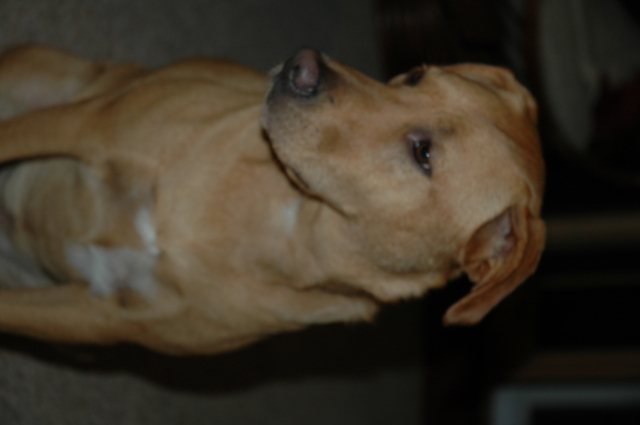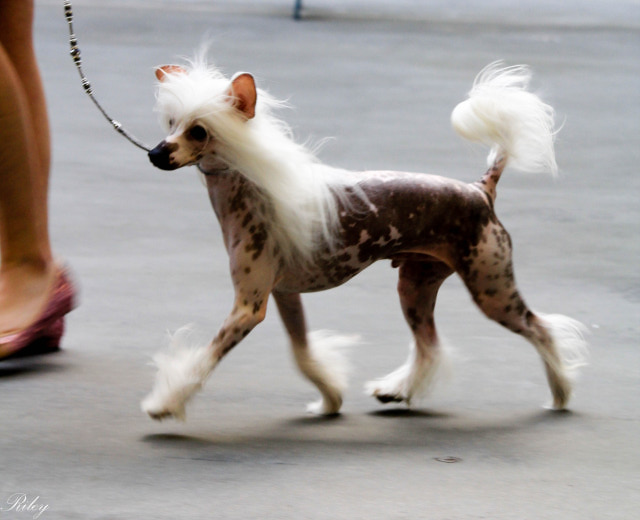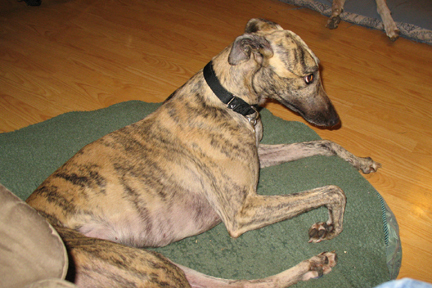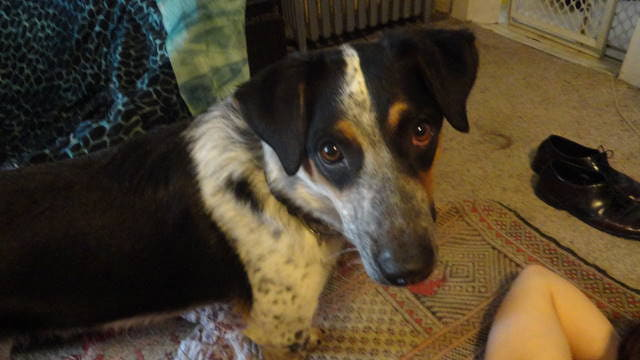QuestionWe have just gotten a 7 month old JRT. According to the previous owner, she was housebroken, crate trained. They also said she spends time in a kennel during the day at times. Ever since we have had her, she has not shown the first sign of being housebroken. we've had her over a month now and I am about to lose my mind over this! I have 2 other dogs (female maltese) they are housebroken, and crate trained. Here is what I have tried so far...
in the beginning (since she was in a new place)-i put food and water in her crate. when she continued eliminating in her crate, i removed the food. that didn't help, so i put her in a smaller crate, only leaving her water during the day and at night. that hasn't worked. we take her out first thing in the morning, when we get home in the afternoon, a few more times before the last time when going to bed. we have tried taking her out by herself, and with the other dogs.....she still will not stop going in her bed and in the house. I know that JRT need lots of exercise, could she be retaliating because she isn't outside as much? i'm desperate!
AnswerFirst thing you'll want to do is get a clean bill of health from your veterinarian on your dog so you know there are no physical concerns. Once you have that, you can start the house training program.
Good Luck!
Links:
http://www.outlawchinooks.com/dog_Potty_Training.html
http://www.outlawchinooks.com/dog_crate_training.html
http://www.OutlawChinooks.com
http://rileytrainingcenter.blogspot.com
http://www.examiner.com/x-11254-Minneapolis-Dogs-Examiner
Dog - Potty Training Basics
Going to the bathroom in the house is one of the biggest issues for new puppy owners. You can easily win the battle if you are consistent, patient, use supervision, utilize confinement and reward your pup with scrumptious treats. Remember, you are teaching your puppy where to relieve him or herself rather than where not to relieve him or herself.
One of your first steps is to choose a place that you want your pup to eliminate. Once you have chosen the spot, always take your pup on leash to the spot and stand there for three to five minutes. If you don't have success, take pup back inside and place them in their crate. When you are home, make this trip every hour or two and praise success with voice and treats to expedite the learning process. You pup will quickly learn that elimination bring tasty rewards.
Use a Crate. Most dogs love their "den" as long as it is the right size. If it is too big, part of it will become a bathroom. If it is too small, it is uncomfortable. Your pup should have enough room to stand up, turn around and lay down. When pup is in the crate, provide a food stuffed chew toy like a Kong so pup has something to occupy the confinement time. The crate should help you predict when the pup needs to "go" so you can teach pup where and why it needs to eliminate outdoors.
Outside Time: Puppies need to relieve themselves frequently. Ideally, your pup should go outside every two hours.
Same Time, Same Place: Take pup out on a six-foot leash and stand in the place you want pup to "go." Praise pup for "going" in the right location.
Boo Boo? Show pup his mistake and let him know he was wrong with a firm "No!" Take pup outside and show him how you want it done. (Not literally!)
Don't rub pup's nose in "it" unless you want him to eat "it."
Don't smack him with a rolled up newspaper unless you want him to eat it. If you want to hit something with a newspaper, roll it up and hit yourself for not paying more attention to pup's needs.
Feed to Succeed: A high quality, nutritional, highly digestible diet keeps odors, waste and trips outside to a minimum.
Take pup out:
After eating
After napping
After a play session
First thing in the morning
Last thing at night
When his eyes are crossed
The biggest key to house training success is consistency. The more consistent you are with pup, the quicker pup will give you the desired response. When pup relieves himself outside, pup earns more free time inside your home. One quick method is alternating freedom and confinement.
On a basic level the following guidelines will help you train your puppy:
Follow the house-training schedule strictly. If pup has an accident you have allowed too much freedom.
While standing in one spot with pup on a leash, allow two minutes for relieving himself. Reward immediately (within one second) with a treat or praise after the desired behavior.
Holding "it" all night is the first stage to successful housebreaking.
If your puppy whines and cries at night, please try to ignore the commotion and go back to sleep. (This applies unless pup is hurting itself.) If you get up even to reprimand pup for making noise, you have just shown your pup that you will get up at night. Occasionally dogs must relieve themselves at night, and ignoring will lead to a big mess in the morning. You can respond to the pup's warning by allowing pup out for only two minutes.
For an easy routine to assist in quickly training your pup to "go outside" and avoid most accidents, follow this simple schedule:
In the morning, carry your pup outside and place it on the ground (attached to your leash) that you have designated as the bathroom. Give your command to "go to the bathroom" or "potty" or "tinkle" or some other suitable phrase. Allow two minutes for a response. Gently repeat the command (in a tone of voice like you use with your coworkers) and as soon as pup responds, reward immediately. Remember to bring your reward treat with you no matter how optimistic or pessimistic you feel.
If pup fails to respond within the allotted time, carefully take it inside and place it back in the crate until you are dressed and ready to try again.
When your pup responds correctly, give lots of praise and of course your scrumptious treat. Giving the treat reinforces the desired behavior.
Now pup is going to the bathroom outside and can earn some freedom in your home. The following table shows a suggested daytime schedule.
Goes to the bathroom outside
1/2 hour free time
1-1/2 hours of confinement
This routine continues until pup learns to "go" on command and earns your trust. At that time you can allow more freedom then go to the next level.
Goes to the bathroom outside
1 hour free time
2 hours confinement
This routine continues until pup is doing well. At that time you can allow more freedom.
Goes to the bathroom outside
2 hours free time
2 hours confinement
This entire process may take up to six weeks. Follow the basics covered here and DON'T become discouraged. They are only pups once and we should enjoy all aspects of new companion's lives.

 Chewing/Stealing
Question
Clarkie
my shih-tzu Clarkie is 21 month
Chewing/Stealing
Question
Clarkie
my shih-tzu Clarkie is 21 month
 dog distraction/deer carcass
Question
ginger
Our dog is a mutt mostly Rhodesian Ridg
dog distraction/deer carcass
Question
ginger
Our dog is a mutt mostly Rhodesian Ridg
 Territory Marking
QuestionHi Kathleen and thank you in advance.
I have a
Territory Marking
QuestionHi Kathleen and thank you in advance.
I have a
 Adult Greyhound Howling
Question
Lisette
Hello Kathleen,
Thank you for taking
Adult Greyhound Howling
Question
Lisette
Hello Kathleen,
Thank you for taking
 A doting mother in need of help!
Question
Chewy
In the past year I got a cattle d
A doting mother in need of help!
Question
Chewy
In the past year I got a cattle d